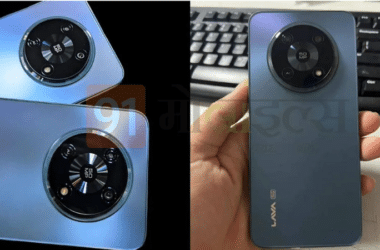Xiaomi 15 Pro and Xiaomi 15 Ultra: Exploring the Ultrasonic Fingerprint Scanner
In the ever-evolving world of smartphones, innovation is key. Xiaomi, a prominent player in the industry, is rumored to introduce a groundbreaking feature – the ultrasonic fingerprint scanner – in their upcoming Xiaomi 15 Pro and Xiaomi 15 Ultra models. This cutting-edge technology has been primarily associated with Samsung Galaxy flagship phones, as well as recent releases like the OPPO Find X7 Ultra and iQOO 12 Pro. In this article, we will delve into the advantages of an ultrasonic fingerprint scanner over traditional optical scanners, and what it means for the Xiaomi 15 series.
Xiaomi 15 Series and the Ultrasonic Fingerprint Reader Rumors
According to Smart Pikachu, a renowned tipster on Weibo, the Xiaomi 15 and Xiaomi 15 Ultra are set to feature the ultrasonic fingerprint scanner. However, the standard Xiaomi 15 is still under consideration. This decision could potentially differentiate the vanilla and premium models of Xiaomi 15.
Ultrasonic fingerprint technology has, until now, been a premium feature available on select high-end phones. As more brands like Xiaomi adopt it, this feature is likely to become more widespread and accessible. In simpler terms, even lower-tiered phones may soon benefit from this advanced technology.
Why Does It Matter?
Ultrasonic vs. Optical Fingerprint Scanners
The key difference between ultrasonic and optical fingerprint scanners lies in their methods of authentication. Ultrasonic fingerprint readers use sound waves to create a detailed 3D render of the fingerprint, while optical scanners rely on light waves to produce a 2D map.
One of the significant advantages of ultrasonic technology is its reliability, especially in scenarios where fingers are moist or wet. Ultrasonic sensors excel at capturing surface imperfections and interferences on your finger, making them more accurate than optical scanners.
Furthermore, ultrasonic sensors have the unique capability to detect blood flow and heart pulses, making them resistant to spoofing with images or dummies. This opens up possibilities for using them to monitor vital signs like heart rate, BMI, and blood sugar levels, potentially saving on additional components.
Unlike optical sensors, ultrasonic sensors eliminate concerns about screen burn-ins, as they do not require direct contact with the screen. This not only enhances security but also reduces manufacturing costs.
Xiaomi 15 Pro Specifications (Expected)
Now, let’s shift our focus to the specifications we can expect from the Xiaomi 15 Pro:
Display
Rumors suggest that the Xiaomi 15 Pro will feature a 2K AMOLED screen with ultra-slim 0.6mm bezels, making it 0.3mm thinner than its predecessor. This promises an immersive visual experience. On the other hand, the standard variant may come equipped with a flat 6.36-inch OLED display boasting a remarkable 1.5K resolution, 1,400 nits of brightness, and support for a 120Hz adaptive refresh rate. Xiaomi is certainly aiming to deliver stunning visuals.
Processor
Both Xiaomi 15 Pro and Xiaomi 15 Ultra are expected to be powered by the Qualcomm Snapdragon 8 Gen 4 SoC, ensuring top-notch performance and efficiency. This processor is designed to handle the demands of modern-day smartphone users, from gaming to multitasking.
In conclusion, the introduction of ultrasonic fingerprint technology in the Xiaomi 15 Pro and Xiaomi 15 Ultra represents a significant leap in smartphone security and functionality. These devices are set to offer a more secure and cost-efficient biometric solution compared to traditional optical sensors, alongside impressive display and processor upgrades.
Stay tuned for more updates on Xiaomi’s upcoming releases, and get ready to experience the future of smartphone technology.

Big Sale Amazon”
Amazon Sale, Discounted Deals & Offers Alert
and Get Upto 90% Discount on All products
Join Us Today
Frequently Asked Questions (FAQs)
1. What is the primary advantage of an ultrasonic fingerprint scanner over an optical one?
Ultrasonic scanners are more reliable, especially when fingers are moist or wet, and they can’t be easily spoofed with images or dummies due to their ability to detect blood flow and heart pulses.
2. Will the standard Xiaomi 15 model also feature the ultrasonic fingerprint scanner?
The standard Xiaomi 15’s inclusion of an ultrasonic scanner is still under consideration, differentiating it from the premium models.
3. What are the expected display specifications of the Xiaomi 15 Pro?
The Xiaomi 15 Pro is rumored to feature a 2K AMOLED screen with ultra-slim 0.6mm bezels and improved visual enhancements.
4. Which processor will power the Xiaomi 15 Pro and Xiaomi 15 Ultra?
Both models are expected to be equipped with the Qualcomm Snapdragon 8 Gen 4 SoC, ensuring high-performance capabilities.
5. How does ultrasonic fingerprint technology affect manufacturing costs?
Ultrasonic sensors eliminate concerns about screen burn-ins, potentially reducing manufacturing costs.












